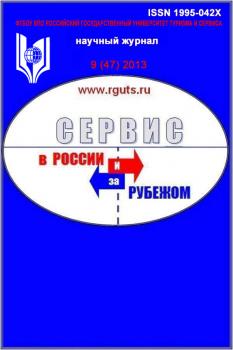This article discusses the problems of formation and development of management structures of industrial organizations and enterprises of network type and network forms of enterprises’ activity. The basic models of network management structures are allocated in the work. Functioning now Russian network structures of industrial enterprises are researched by the authors and the question about the need to develop a conceptual approach to the creation and development of management structures is raised. The authors define a network industrial organization as the perfect organizational type, characterized by the structure of free-bounded networks fundamentally equal and independent partners. The authors make conclusion about the need to implement the new principles of management in the network structures of industrial organizations, which is caused by two circumstantes. The first is the need in today´s environment to extremely quickly and flexibly respond to market demands, take into account the demand of buyers, new government restrictions, actions of competitors, technological innovations, discoveries, etc. The second – ubiquitousness of computer networks and various applications (CAD, Computer-Assisted Management, databases (DB), accounting and control programs, etc.) in enterprises. The authors justify the key areas of cooperation between the state and the network of industrial organizations, and formulate the principles of the formation and development of the organizational management structure of a network industrial company.
organization, network management structure, the basic management model, principles
1. Zheltenkov A.V. The innovative mechanism of the industrial organization management: a monograph. Moscow: MSRU Publishing House, 2012. 123 p.
2. Zheltenkov А.V. Forming innovative mechanism of industrial control system development// [Vestnik MGOU]. Bulletin MSRU. Series «Economics». 2011. № 4. Pp. 153-157.
3. Charles M. Savage. 5th generation management: an enterprise as a network of people. Ijital Press, 2013. 262 p.
4. Duysters G., Kok, G. and M., Vaandrager (2010). “Crafting successful strategic technology partnerships.” R&D Management 29(4): 343-351.
5. Tret´jak O.A., Rumjanceva M.N. Network forms of intercompany cooperation: the approaches to the explanation of the phenomenon // [Rossijskij zhurnal menedzhmenta] Russian Journal of Management. 2013. №1(2). Pp. 25-50.
6. Hagedoorn J. and Duysters G. Learning in dynamic inter-firm networks: the efficacy of multiple contacts. Organization Science 23(4): 525-548.
7. Heiman B. and Nickerson J. A. Towards reconciling transaction cost economics and the knowledge-based view of the firm: The context of inter-firm collaborations. International Journal of the Economics of Business 9(1): 97-116.
8. Madhok A. Reassessing the fundamentals and beyond: Ronald Coase, the transaction cost and resource-based theories of the firm and the institutional structure of production. Strategic Management Journal 23: 535-550.
9. Madhok A. Reassessing the fundamentals and beyond: Ronald Coase, the transaction cost and resource-based theories of the firm and the institutional structure of production. Strategic Management Journal 23: 535-550.
10. Thorelli H.B. Networks: Between markets and hierarchies. Sloan Management Review(7): 37-51.





